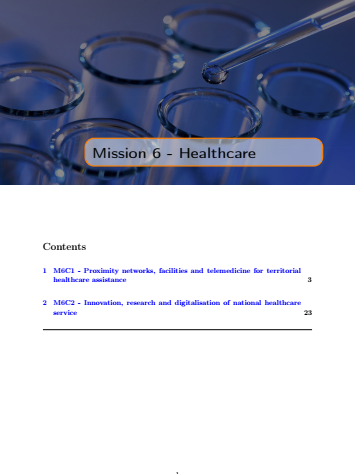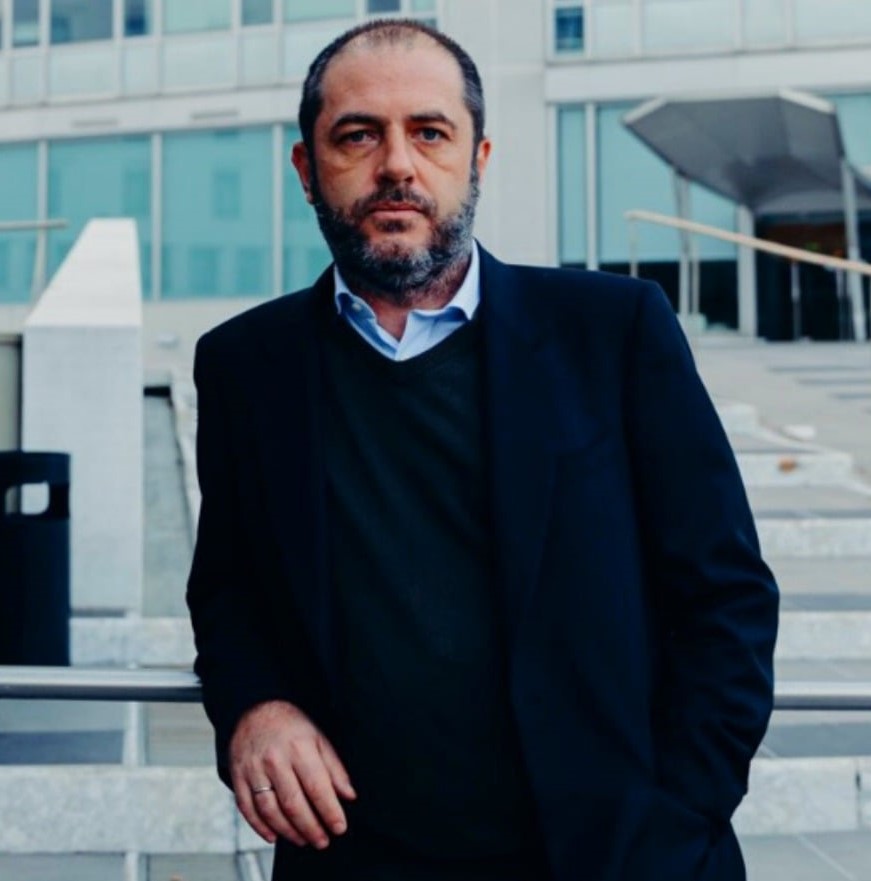Recovery Plan, a healthcare mission (part 4)
An interview on the Recovery Plan draft with Dr. Michele Usuelli, a neonatologist, who has been studying the hospital-territory relationship in detail for three years.
Dr. Michele Usuelli's analysis
An interview on the Recovery Plan draft with Dr. Michele Usuelli, a neonatologist, who currently holds the position of Regional Councillor in Lombardy and has been studying the hospital-territory relationship in detail for three years.
What is your general impression of the Recovery Plan draft which talks about health and healthcare, the so-called "mission number six"?
My first impression is that there is very little talk about this document, fifty pages written in English that redesign healthcare in Italy in the near future. I don't think anyone in the health professions knows anything. Yet in this draft, which is being discussed by the health committees of the House and Senate, there is talk of investments of almost twenty billion euros. I have read and analysed the document. The general outline is very good, but in my opinion, there are mistakes, which can still be corrected, that can make the difference between effective planning and a dead end. So I got in touch with several deputies and senators from the health committees to discuss some points and improve the draft. I also shared the document and my analysis with Letizia Moratti, the Lombardy Region's councillor for welfare, and with the members of the regional health commission, because the regional leadership cannot fail to know how the central government intends to move in the coming years, especially while the reform of Law 23 (Regional Law no. 23 of 11 August 2015 "Evolution of the Lombardy social and health system: Amendments to Title I and Title II of Regional Law no. 33 of 30 December 2009 - Consolidated text of regional laws on health" ed.)
The first part of the document seems to be a response to the shortcomings shown by the organisation of territorial medicine during the COVID-19 emergency. Does this seem to be an effective response?
The ideas are good, but several aspects need to be detailed in my opinion. In this project document, for example, there is mention of three services that will be the basis of a new model of care and treatment: The "Community Health Houses", which Minister Speranza calls "Community Homes", Home Care and Community Hospitals. These realities will have to work like communicating vessels, but the document never describes how the 3 services can be integrated.
Another aspect that should be discussed is the numbers. It is not clear how it is possible to plan the establishment of 2,575 Health Houses. Where does this number come from? One for every 23,000 inhabitants seems too many. In Emilia Romagna there is one for every 40,000 inhabitants. Prof. Remuzzi, in his report on the reform of Law 23, recommends 1 house for 60,000 citizens (1 house for each health district). The same goes for Community Hospitals. There will be 753 of them, 1 for every 80,000 inhabitants. How did this number come about? They seem too many, they will probably be small centres and we will struggle to find sufficient staff to work in them to make them effective and efficient. The current experience of so many public competitions for healthcare professionals, which have failed, should teach us something. I am not just talking about the number itself, but also about the fact that the numbers must be consistent with each other, especially at the planning stage. It is not acceptable that half the users of a Health House go to one Community Hospital and half to another, just because this aspect has not been considered. The numbers must be consistent and modular. Whoever evaluates the project in the EU might think (I would think) that the numbers were decided to make the accounts add up to 7 billion, the figure requested, and not on the basis of an analysis of citizens' needs.
Can the "Health Houses" really become the citizens' point of reference for health issues?
Yes, if we start to learn from experience. From the document it seems that we are in year zero, but there are already many such realities and we must build on the lessons learned from these experiences. For example, we have to start from the assumption that general practitioners do not spontaneously decide to work in the Health Houses, we need incentive mechanisms. A study by the Bocconi University shows that the Regions that have obtained the best results are those that have provided the most incentives. Clearly, if a general practitioner knew that by working in a Health House he or she would not have to pay the rent of the office and the salary of the staff, he or she would have every interest in changing working methods. At the moment there is little incentive for general practitioners in Lombardy to work in an aggregated form, neither from an economic nor from a professional point of view. The expenditure chapters of the Recovery Plan draft concern infrastructure and equipment, there is nothing about training or incentives. The risk is that the Health Houses will remain empty.
Another issue is the presence of the social worker. In Lombardy there are 13 Health Houses, they are called PreSST (Presidio Socio Sanitario Territoriale; Territorial Social and Health Service). No social worker works in any of these PreSSTs. If there is no social worker, how can it be a social health centre? We have to hope that the doctor or the nurse will stop being a doctor or a nurse and take care of the most problematic social cases, without having the competence to do so.
Click on the image to download the Recovery Plan draft
The second part of the document focuses on technological innovation. How do the projects look to you?
Clearly one cannot disagree with the general idea of investing in technologically advanced devices. But you have to be careful and avoid throwing money away. Talking about technological innovation, the document basically says that if there are 80 old CT machines we have to buy 80 new ones. This pattern of reasoning is not good. The logic, in my opinion, should not be to simply replace outdated devices with new ones, but first we should analyse current needs and make a forecast of future needs. How many CT machines do we need today? 80, 60 or 120? How many in a year? How many in five years? This type of reasoning cannot be missing from an investment planning document.
I really hope that this is the right time to make sensible investments. The Electronic Health File can really revolutionise the world of healthcare, not only from a logistical and functional point of view, but also from a clinical point of view. But today we have databases that do not talk to each other, sometimes within the same hospitals. The document talks about health data being available throughout Europe, a result that will only be achieved if investments are made in a logical way.
How will it be possible to harmonise the State-Regions conflict in investment management?
I hope that, at least when it comes to information technology issues, the State will be able to take over responsibility and decide how to target investments. We must overcome the current fragmentation, we cannot allow each Region to act autonomously in this field without precise coordination. An example? A colleague of mine from Emergency went to work in Crotone and there he was given the first dose of a COVID-19 vaccine. When he returned to Milan, it was practically impossible for him to get the second dose of vaccine without banging his head against dozens of rubber walls before finding a solution. Another example: I was in charge of the electronic health record in prisons. Each region has its own and when a prisoner is transferred from one prison to another, which happens often, it is a nightmare for the prison doctor to retrieve the health information. This fragmentation, it must be said, is not only between different Regions, but also exists within the same Region. In Lombardy, each hospital was allowed to choose its own booking software, which is often a closed system and does not share information with other software from other suppliers.
In my opinion, the central government must take the helm in this area, which is, relatively speaking, one of health management, but more of connection and coordination.
There is a lot of talk in the document about telemedicine. What do you think about it?
I am not an expert in telemedicine. As far as I know, it's not very widespread in Italy today. What scares me about telemedicine is that it is a very attractive concept for those who know little or nothing about medicine. According to politicians, it seems that telemedicine today is the panacea for all the ills of healthcare. In this document, too, there is often talk of telemedicine, artificial intelligence and Big Data. However, definitions and fields of application are lacking. For many doctors, telemedicine is the video call made to the patient.
I repeat: The document under discussion has a very good structure, but some details risk making it ineffective. There is a lot of money at stake, there really is an opportunity to take a step forward in care and treatment. I wish many people would take the time to read this draft, so that we can have a healthy discussion aimed at improving the plans.
Download Dr. Usuelli's analysis of the draft Recovery Plan - M6 Health

